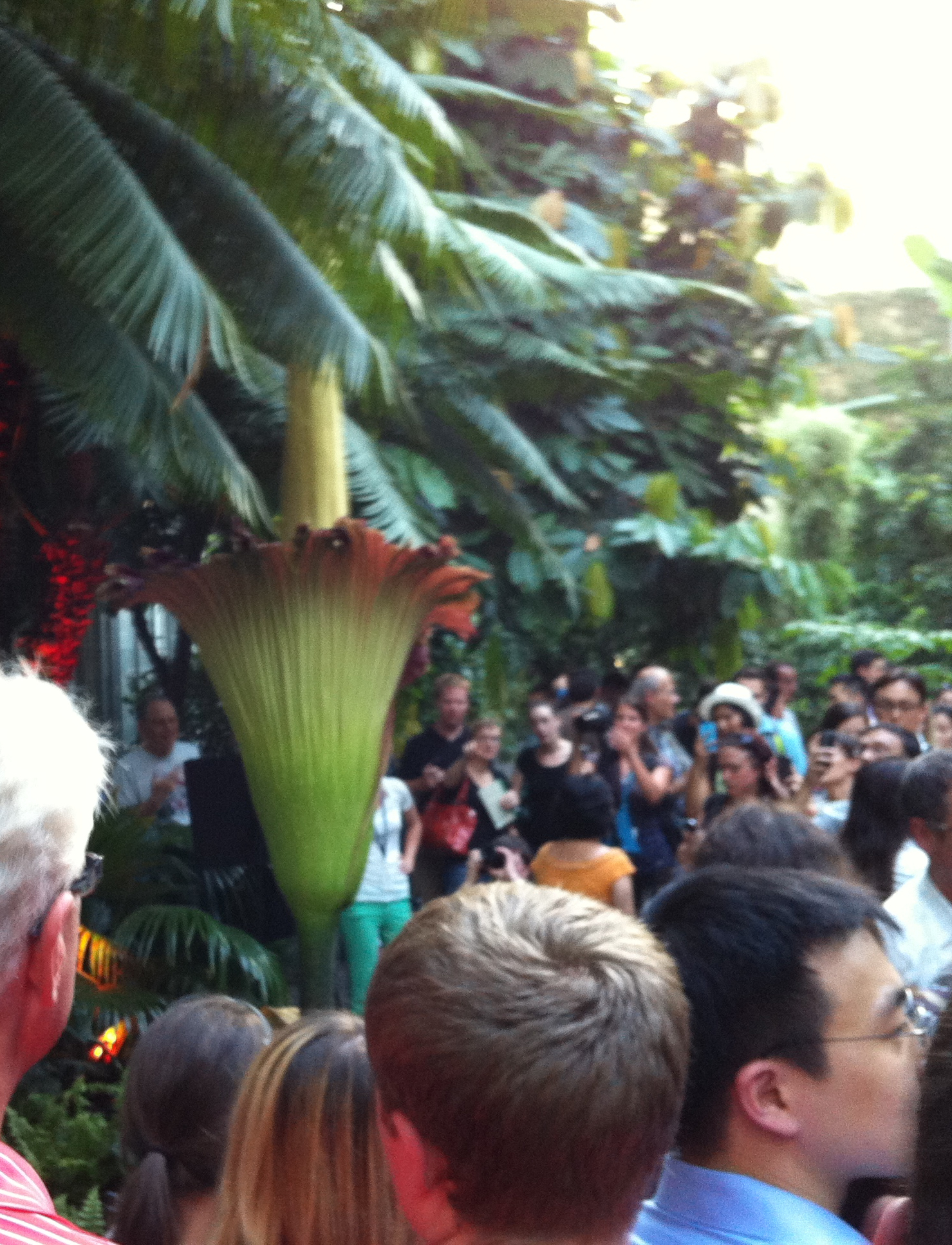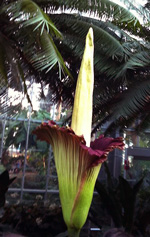“So, what was it about this plant (you ask), that had thousands of plant enthusiasts lined up for over an hour?” The Amorphophallus titanum is intriguing for many reasons: size, rarity, the crazy blooming cycle and, most especially, its fragrance. All of these striking attributes draw crowds of people nationwide to the unfolding show. (Another has subsequently bloomed amid fanfare at the University of California, Santa Barbara greenhouse.)
The titan arum is reputed to have the largest known unbranched inflorescence in the plant kingdom. That is not quite the same thing as having the largest “flower” in the world, but it was by far the largest flower I have ever seen.
And this was indeed a rare event. Titan arum does not have an annual blooming cycle. In fact, the time between blooms is unpredictable. It can go years, even decades without blooming. And once this giant flower blooms it has a very short show. Once fully opened it will remain in bloom for only 24 to 48 hours before it quickly collapses.
Why is the blooming cycle so unpredictable? All plants spend a great deal of energy producing flowers. And for titan arum to create such a huge flower it takes a lot of energy. This energy is stored in a huge underground stem called a “corm.” It will only bloom when a sufficient amount of energy is accumulated, usually after several years.
Shakespeare said, “A rose by any other name would smell as sweet.” But even Shakespeare could not conjure a more apt nickname for titan arum than the “corpse flower.” It does indeed smell like rotting flesh (though most observers agreed that it had not reached its full potential). The stench serves to attract pollinators, such as dung and carrion beetles from across long distances. With such a short bloom period, titan arum needs to “attract” pollinators quickly in order to reproduce.
Yes, I was thrilled to see this giant from the plant world. It was well worth the hour and a half wait in line on a hot and humid summer evening in Washington, DC. Though, I’m not sure what smelled worse: the corpse flower or all the sweaty tourists!




Recent Comments